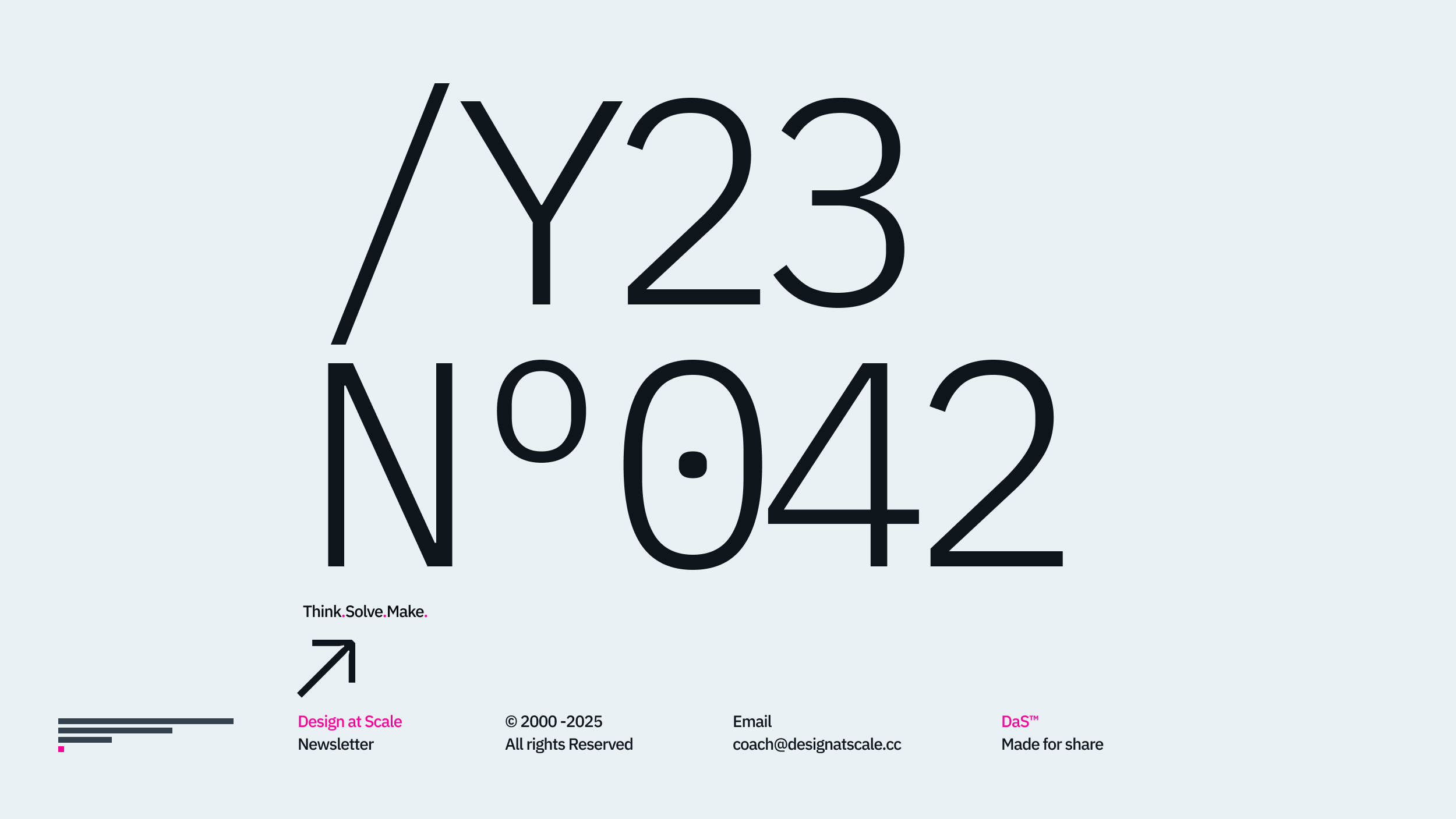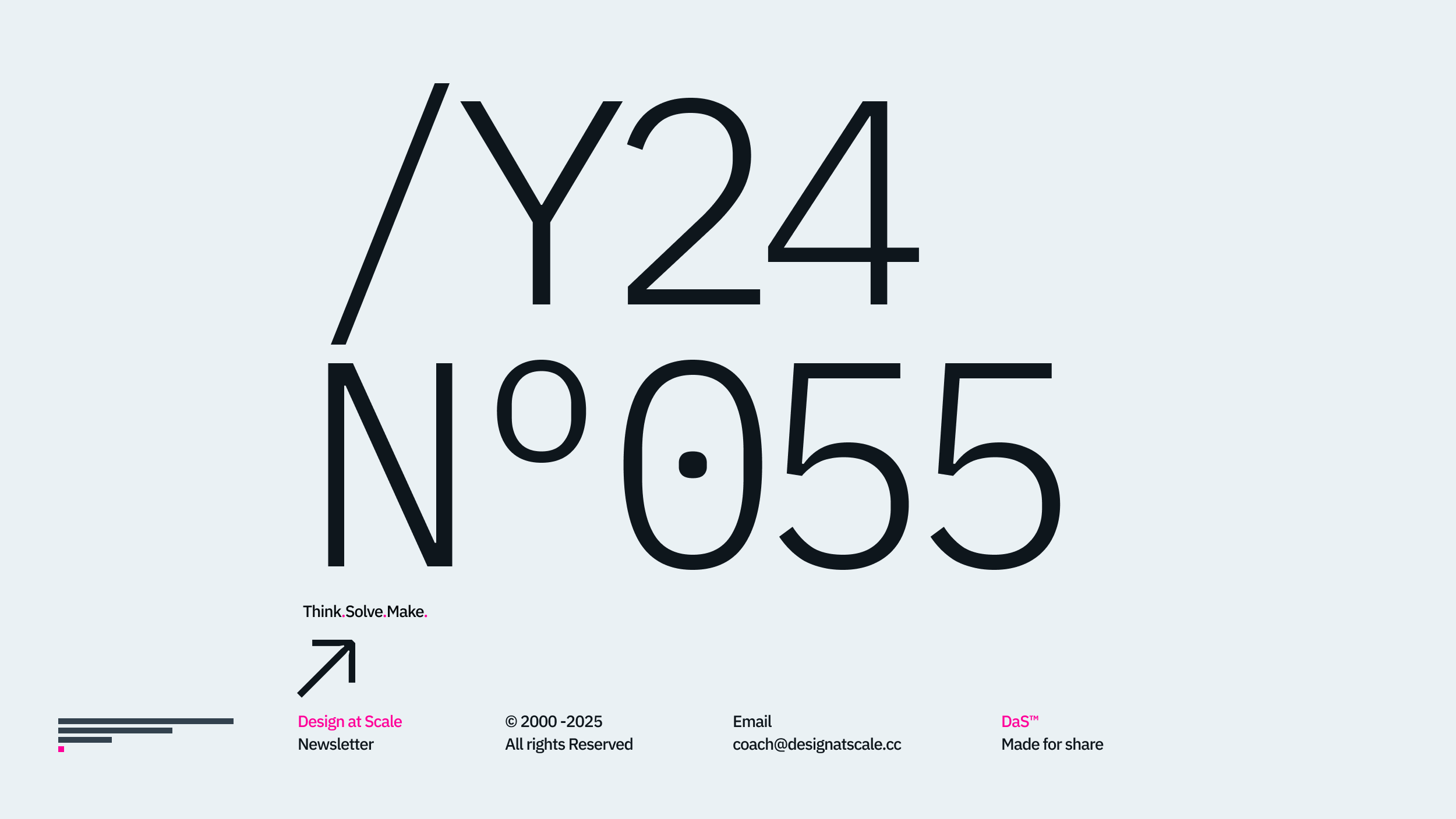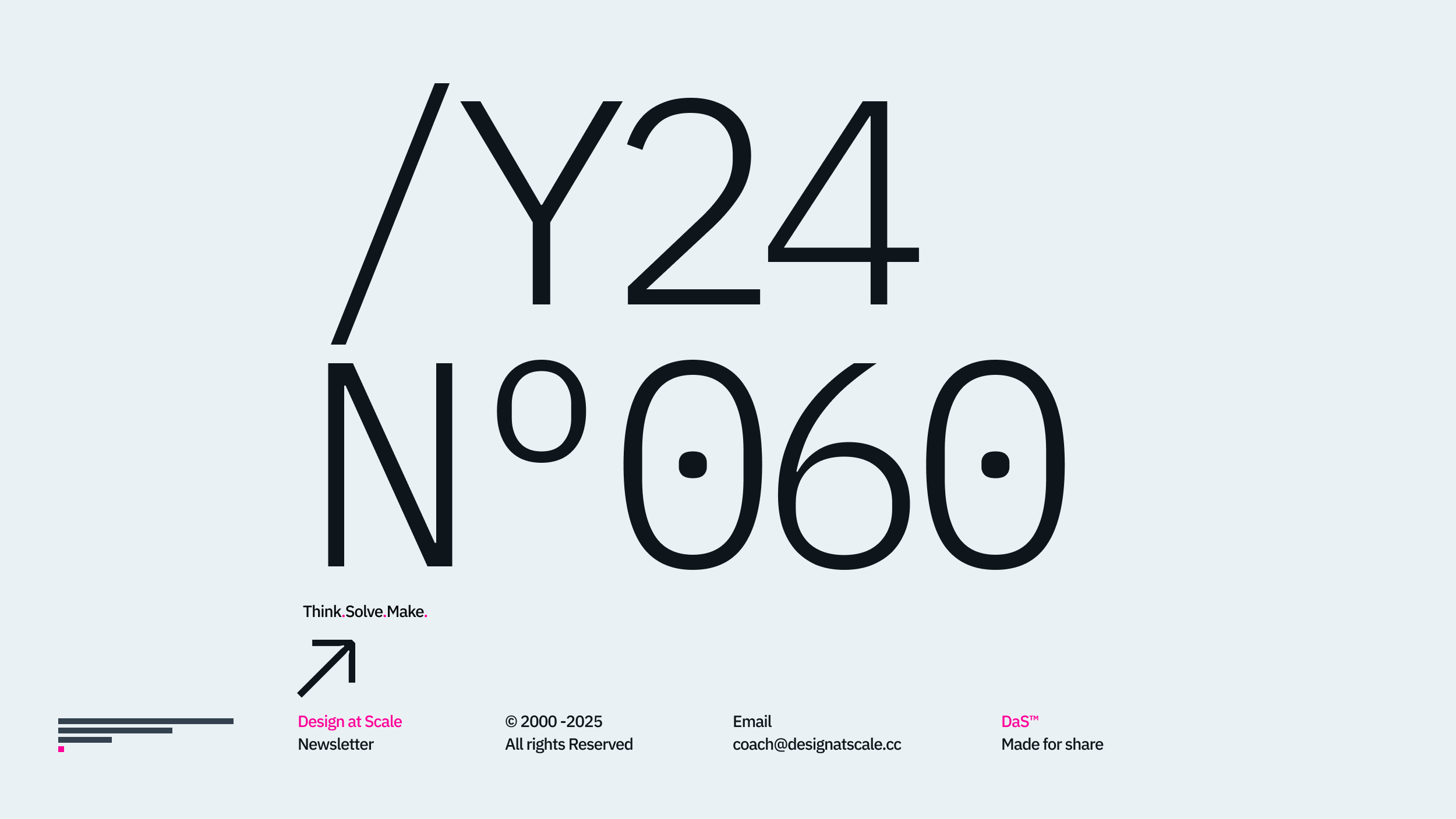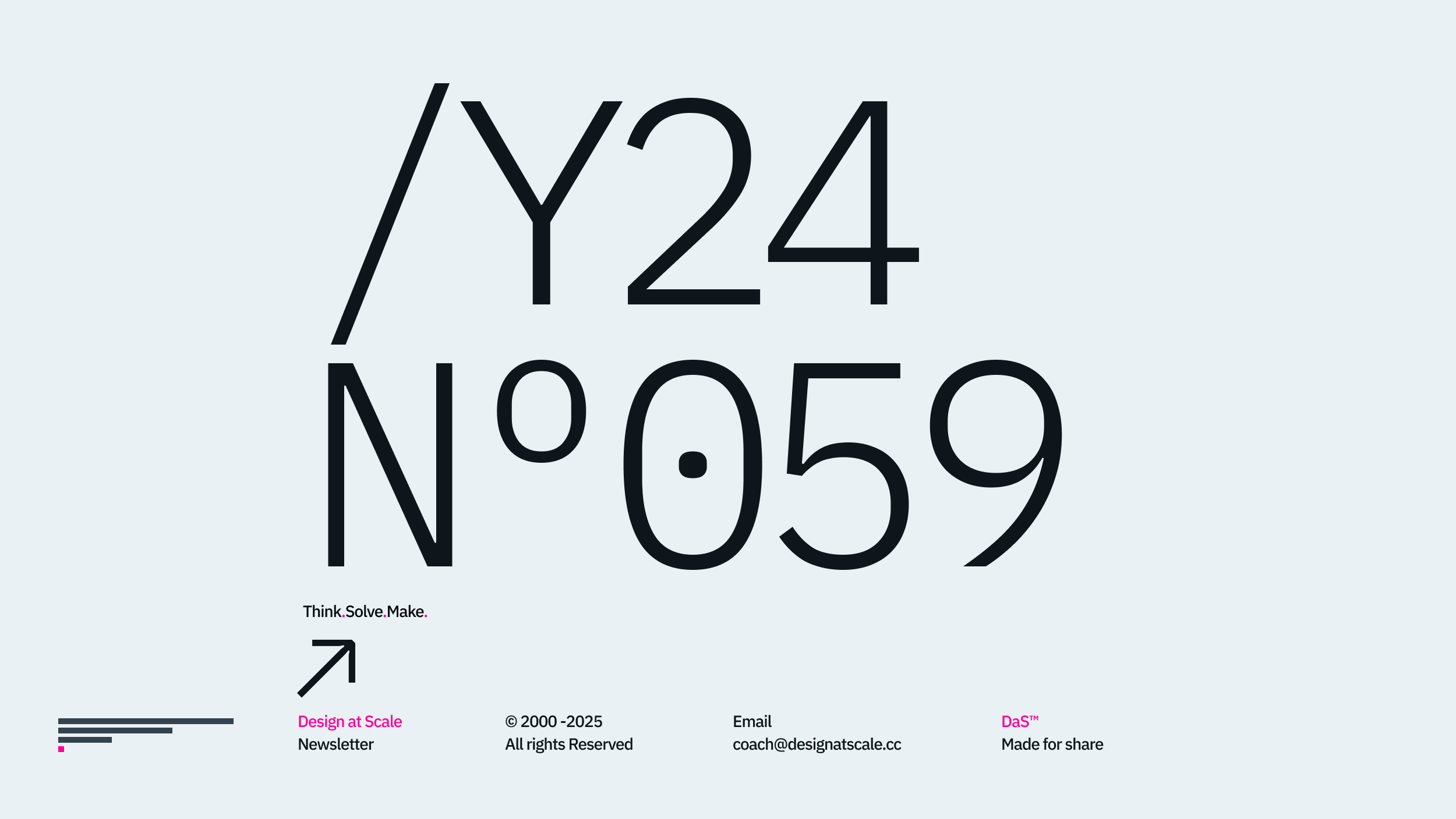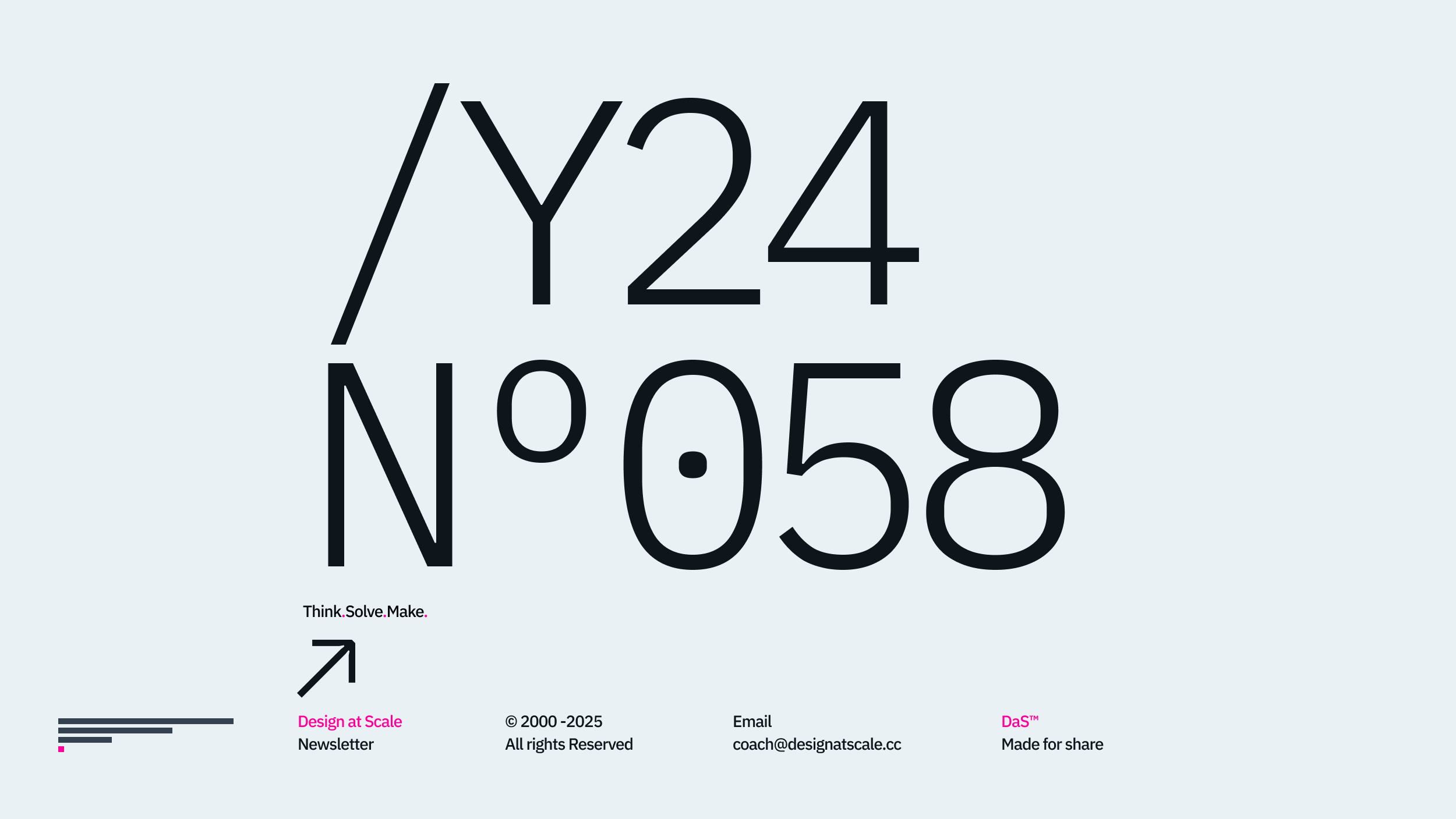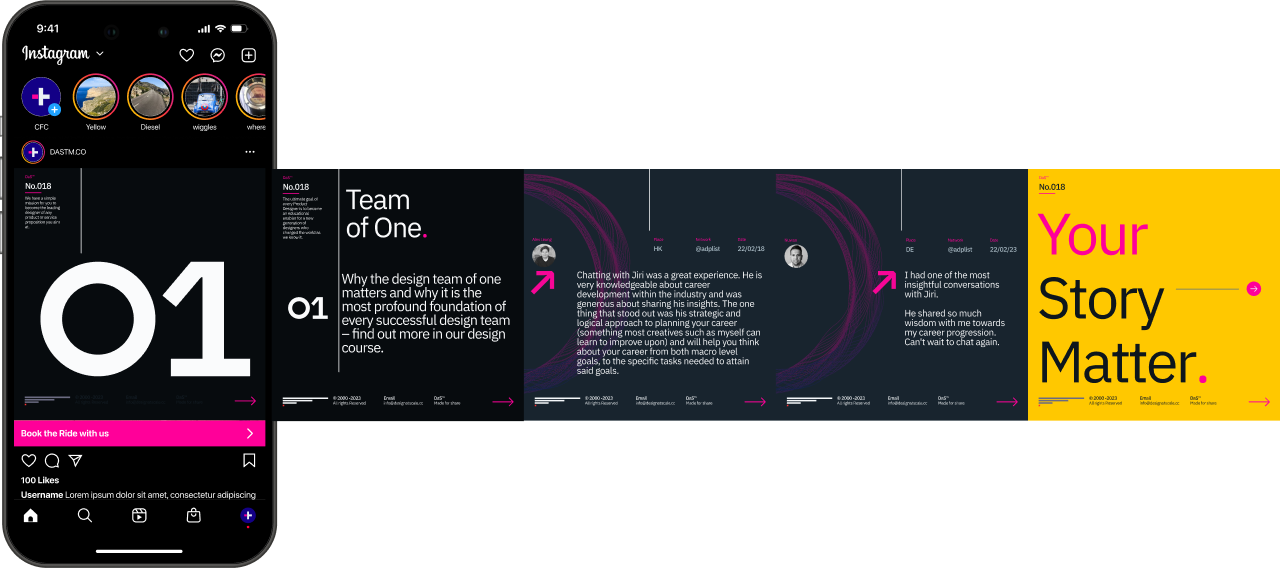Welcome to every first article of the DaS™ Academy series that focuses on designers in the team of one.
Let’s start with ambition – after all, every designer has one, yet they struggle to encapture and broadcast it in a consistent, well-crafted way to make a difference. Before we dive into what ambition means for the design, designer and their growth, let's look at the origin of the word in Latin.
Ambitio – means Gloria, kind of resizing, going about, thriving for popularity or thriving for internal advancement.
Reach honour, glory and fame.
When we ask scholars to define ambition, they will advise us to set realistic goals to be persistent and hardworking. Be willing to take a risk. Be ready to learn from our mistakes, be humble and help others.
In fact, let’s look at ambition from a rather stoic perspective. Not in the sense of becoming motivated by something external and progressing to a greater role, fame, position or reputation. But in fact, having the motive of inspiring greatness within others by manifesting its own qualities and opening the eyes of others to become highly skilled in your own profession.
The critical distinction in question is that we must manage both sides of ambition. The internal ambition of becoming the best version of ourselves and externally broadcasting our own actions in the way we help and empower others to become the best version of themself – to think. In this way, we’ll never be declared irrelevant or disposable. “As Marcus explains, “ambition means tying your happiness to what other people say or do…sanity means tying it to your own actions.”
In the design industry, this became a paradigm for striving for perfection and dedication to improve the existing propositions. For decades, thousands of great designers were willing to take risks and challenge the status quo in order to advance the product, service or business itself.
Why is ambition so important for designers? Why is the challenging status quo the drive that leads us to new opportunities and solutions? Lastly, why do companies look for creative people to be challenged or exploited?
The demand for creative people in the industry has increased the diversity between quantity and quality. Ambition plays a role in knowing which type of designer we are dealing with. Creativity is only effective when recognised. At the bottom of the company, we might have the smartest and most entrepreneurial people who think outside the box. Yet, still, they're beginning to learn how to implement creativity within the organisation.
Ambition is, therefore, a compass – it allows the designer to rise through the company hierarchy and successfully navigate through the cultural clutter and spider of the network to realise that ambition alone is the most profound element above all.
People at the top are the entrepreneurial types. They're examples of one’s ambition to thrive and succeed. How many designer CEOs have you seen? Once the creative people get to the top, it’s an entirely different game.
The designer, creative or artist always stays outside the hierarchy and builds structures that are hard to measure or evaluate. The articulated ambition with a purposeful goal for the team makes this growth ambition meaningful.
Wonder where all the Design systems, thinking and methods came from?
Our ambition is to control the creative process at scale with knowledge. Millions of people use our knowledge with one click, being accessible with the next step at the end of our fingertips.

Why design
Like every discipline, design has evolved from creative expression to a collaborative discipline of multiple outcomes/opinions reflecting design in thinking. Through ambition, we continue to control and thrive from linear thinking to a well-connected system of thoughts and strategically redefined methods, helping businesses to thrive in an era of constant change.
For the first time in the history of civilisation, design is becoming a discipline that does not have to explain itself. Have you asked a doctor, lawyer or architect to justify their work? With increasing evidence, the design and designers are getting the well-deserved position around the table and creating, crafting and communicating the vision that divides the companies that survive to companies that thrive (AirB&B, Disney, Pixar, to name a few)

Why ambition, and why now?
In an era of constant change, ambition gives us one single direction. It helps us focus on what is important and dear to us—the navigation points in a sea of opportunities, business challenges and people’s hidden agenda. The ambition cut it through.
If you have and know your ambition, you design to express, not impress; you build the bridges of understanding between design and technology. You understand that constant change is the only thing you can rely on. And the growth in a group of like-minded individuals is the only way to success.
Ambition (and further discussed beliefs and design philosophy) allows you to navigate through complex non-design environments by redefining how you communicate the work and how the work is communicated back to you.
That's why it's so vital for every designer to have an ambition on its own.
The question that stands out is;

What is your design ambition?
With close to +3k interviews on various design networks, I’ve found several answers to why people want to be designers. Students who apply for their first job do not know whether creativity, communication or delivery drive them. What is their ambition to become a designer?
The mixture of responses makes me wonder whether we have inspired a new generation of creators focusing more on buzzwords in their CVs rather than a powerful army of thinkers and makers proud of their work that celebrates humanity.
Let’s step away from frameworks and tools using jargon like user experience, customer integration, Double Diamond and design thinking. Let’s step into the world of your own creation – your ambition.
Why do you want to be a designer?
What designer do you want to be?
Is the design a place or destination?
Is design identity more important than the outcome?
What message are you sending to future generations?
If the design is a person, how do you treat it, and what relation do you wish to have?
Everything in our lives comes with a sacrifice; what are you willing to sacrifice for your design ambition?

Why is giving up not an option?
The design has already changed – do not cry about the tools, methods or additional homework. You are a designer, and your ambition is to design a new you.
Get ready; this will be the most significant project of all. The project that you’ll be most proud of. The project where you become “a leader with no title”. “It takes what it takes” to make it succeed, and the impact is not measured by likes and hugs but by respect and professional peer recognition.
As a result, you become a consistent designer delivering scalable, integrated propositions across all aspects of your life – where, finally, you “choose yourself.”

Happy scaling through design!
Hey, I’m Jiri Mocicka.
London-based Design Director, Trusted Advisor and Author of Design at Scale™. The method that empowers individuals to shape the future organisation through design.
If you have a question, join our Community and reach out to like-minded individuals who scale design propositions. An online Academy can help you to find your feed in teams of 01, 10, and 100, supported by Grid Magazine and Supply section, where we weekly bring more insights on how to become a design leader in your organisation.





